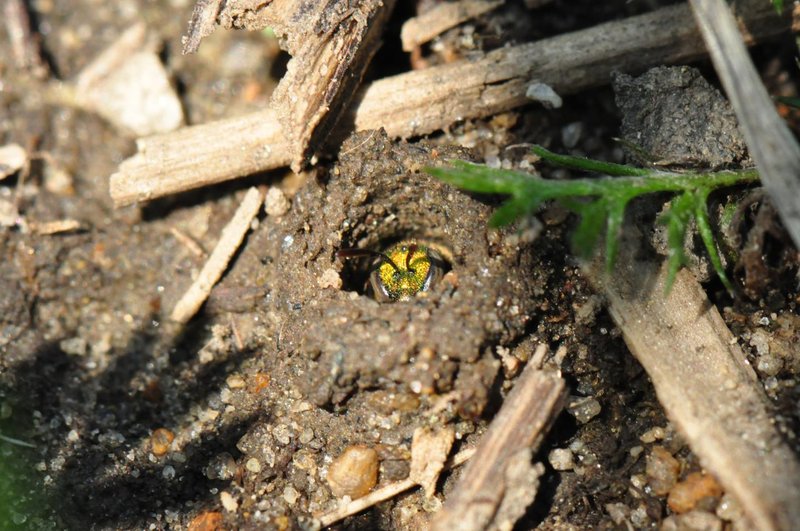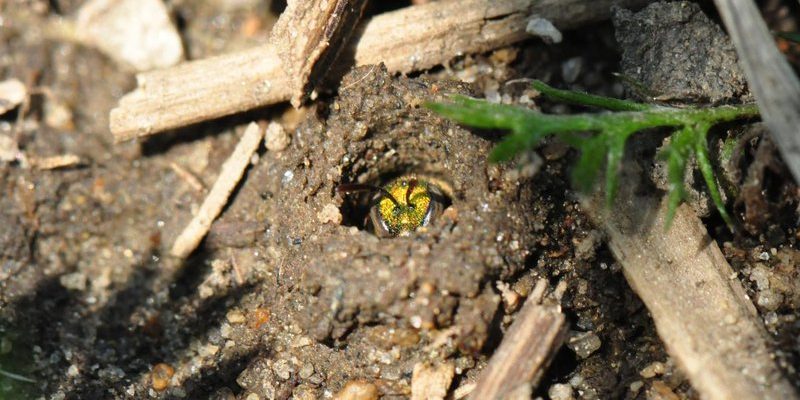
What is the Habitat of Sweat Bees?
Sweat bees are quite adaptable when it comes to their habitats. You might find them buzzing around gardens, parks, and fields. They are particularly fond of areas with plenty of flowers since they rely on nectar and pollen for food. Imagine a wildflower meadow in the summer—colorful blooms everywhere—and that’s basically their playground!
These bees aren’t picky. They thrive in both urban and natural environments. You can spot them in grassy areas, along trails, and even in your own backyard if you have the right plants. They prefer well-drained sandy or loamy soils for nesting, often opting for places where they can dig into the ground easily. Honestly, the more diverse the plant life in an area, the better it is for sweat bees!
Nesting Locations and Types
Sweat bees typically build their nests in the ground, but they also have a few tricks up their sleeves. Most often, they excavate small burrows in sandy or loose soils, which allows them to create a cozy home. However, they can also be found nesting in other surprising spots! For example, some species will take advantage of pre-existing holes in wood or even plant stems.
What’s really cool about these bees is that they tend to return to the same nesting sites year after year. It’s like having a favorite vacation spot that feels just right. The nests usually consist of a series of small chambers where the female lays her eggs and stores food. There’s a touch of artistry involved, as they arrange pollen and nectar in these chambers, ensuring their young have plenty to munch on when they hatch.
The Nesting Process of Sweat Bees
So, how does a sweat bee go about building its nest? It starts with a dedicated female looking for the perfect spot. She’ll use her strong mandibles to dig into the ground, sometimes creating an impressive entry tunnel that can be several inches deep. This takes a bit of effort!
Once she finds a suitable space, she’ll create multiple small chambers, each serving a specific purpose. In these chambers, she lays her eggs and stores food. Here’s where it gets interesting: the female will often line the nest with a special mixture of pollen and nectar, which is essentially a power lunch for the larvae. This strategy ensures that when the eggs hatch, the baby bees have a delicious meal waiting for them. It’s a thoughtful touch from a hardworking mom!
Why Sweat Bees are Important for Ecosystems
You might be wondering why you should care about these tiny bees. Well, here’s the thing: sweat bees play a vital role in pollination. Just like honeybees, they help plants reproduce by moving pollen from one flower to another. This process is crucial for many plants, including fruits and vegetables, which means they’re indirectly contributing to our food supply.
Furthermore, sweat bees are often among the first pollinators to emerge in the spring. This early activity is essential for the blooming of spring flowers. Think of them as nature’s early risers, kicking off the pollination season! Their presence helps maintain healthy ecosystems, supporting biodiversity and keeping plant populations flourishing.
Challenges Sweat Bees Face
Despite their importance, sweat bees are not without their challenges. Habitat loss is a major concern, as urbanization and agriculture often destroy the places these bees call home. Pesticides and other chemicals can also harm their populations. It’s like losing your favorite restaurant to a big chain—it’s disappointing and affects the community.
Climate change is another threat impacting sweat bees. Fluctuating temperatures and altered weather patterns can disrupt their lifecycle and availability of food sources. If flowers bloom at different times due to temperature changes, bees might miss out on their seasonal feasts. Helping to protect their habitats and supporting organic gardening practices can make a huge difference for these little pollinators.
How You Can Help Sweat Bees
If you’re interested in helping sweat bees thrive, there are plenty of simple ways to pitch in. First off, you can create a bee-friendly garden. This means planting a variety of native flowers that bloom at different times throughout the year. Think about it—keeping a steady food source available is essential for these busy bees.
Avoid using pesticides and herbicides, as these can be harmful to sweat bees and other pollinators. Instead, consider natural pest control methods. Additionally, leaving some areas of your yard a little wild can provide perfect nesting spots for these ground-dwelling bees.
Lastly, educating yourself and others about the importance of sweat bees can lead to greater awareness and action. It might even inspire your friends and family to join you in creating a more bee-friendly world!
Sweat bees, often overlooked due to their smaller size, play an essential role in our ecosystems. From their unique nesting behaviors to their importance in pollination, these little creatures are worth knowing about. By understanding their needs and challenges, we can take steps to support their populations and, in turn, our environment.
So the next time you spot one of these tiny bees buzzing around, take a moment to appreciate the work they do. After all, every little bee contributes to the beautiful tapestry of nature, and who knows—maybe they’ll even inspire you to grow that garden you’ve always dreamed of.

